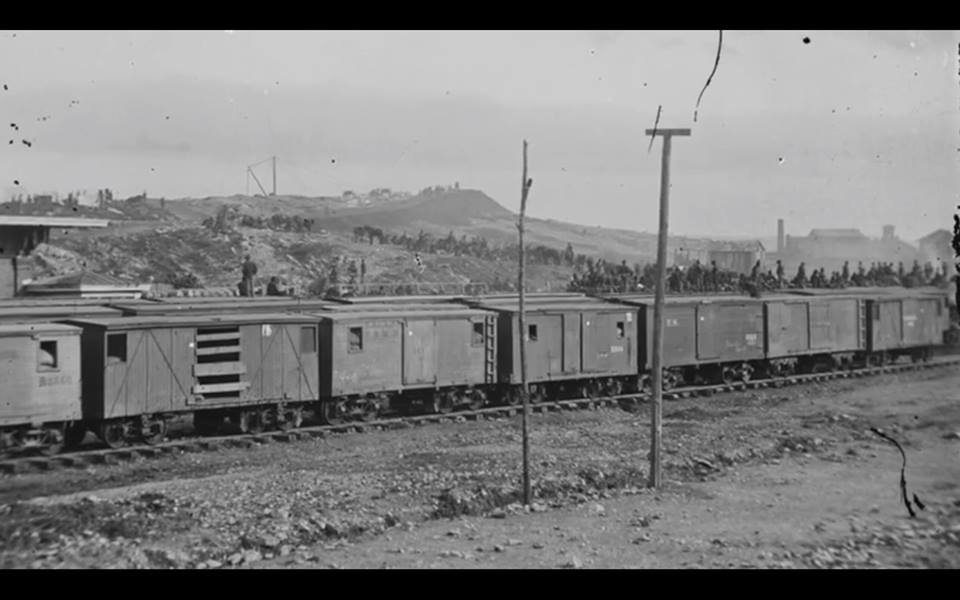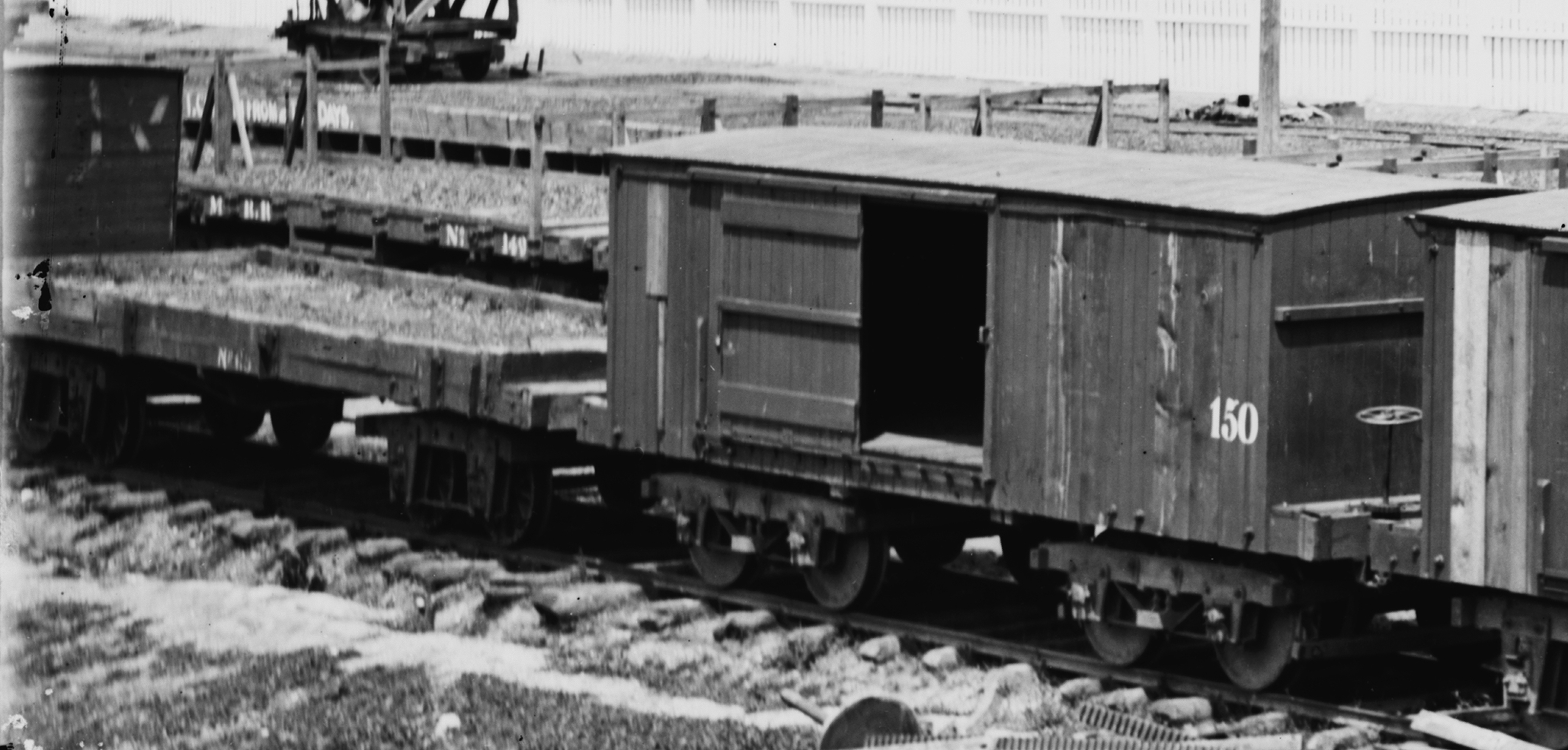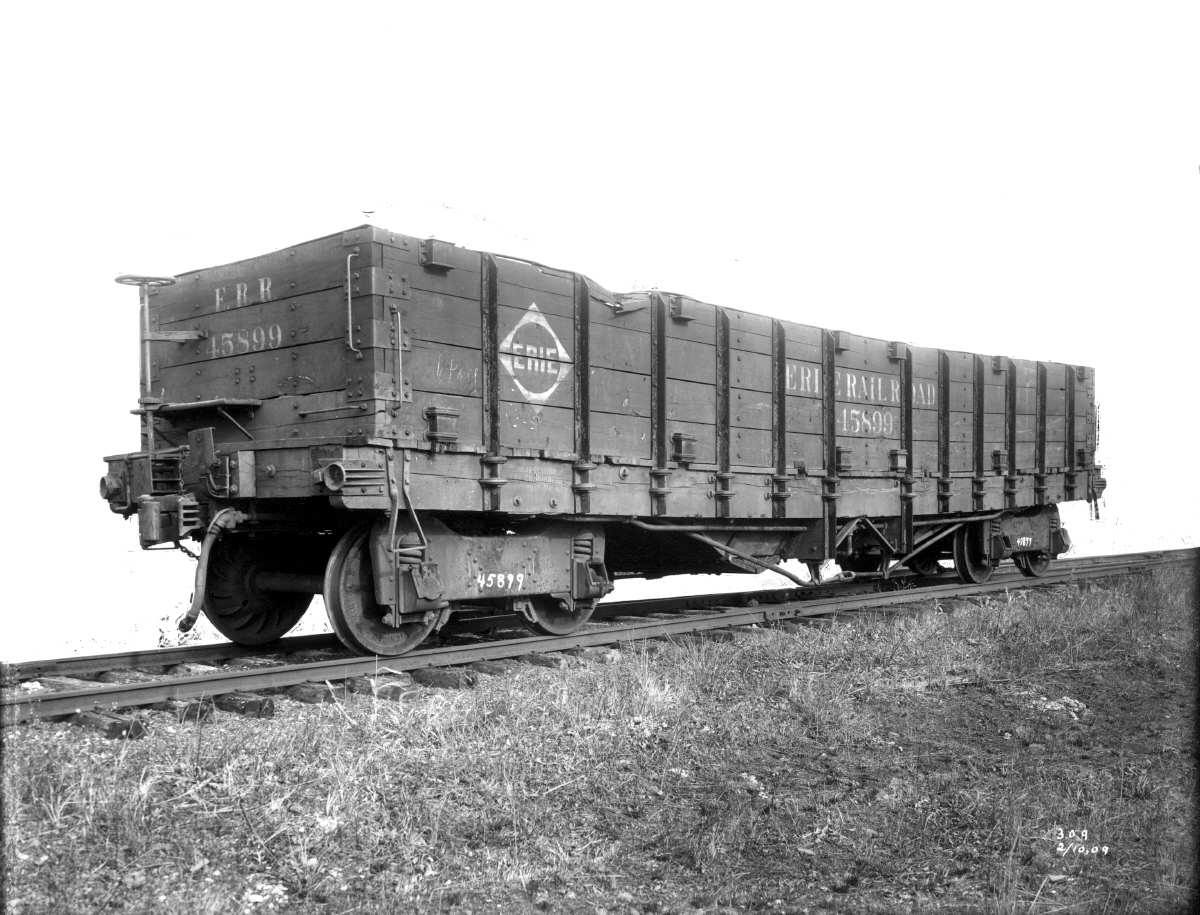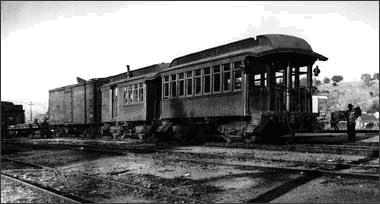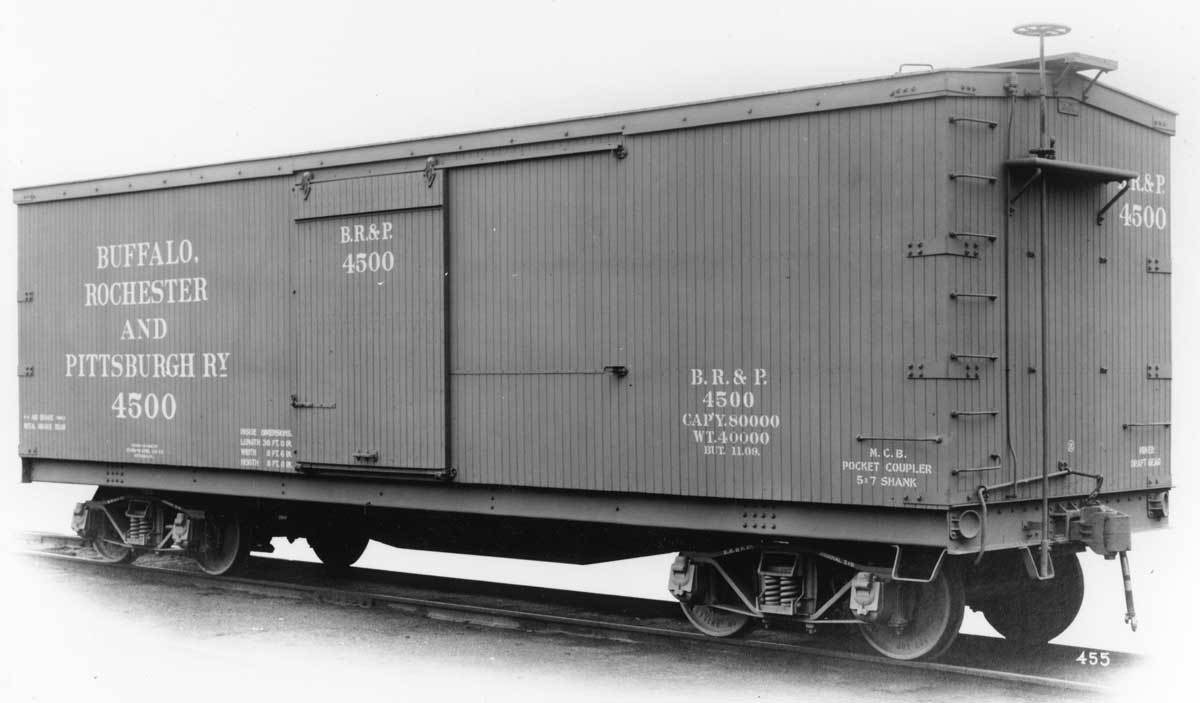History: During the early years of the industry freight was hauled on simple flatcars or early gondolas, which were essentially flatcars with short sides to keep the lading from rolling or falling off in transit (or in the case of bulk materials, to keep them confined). Operational practices at the time often followed those of England, birthplace of the railroad. However, since the United States experienced much harsher and unpredictable weather than its neighbors across the Atlantic, especially during the winter months, flatcars became impractical to handle more sensitive freight which must be kept dry. In Upstate New York was the burgeoning Mohawk & Hudson Railroad, the first chartered system in the United States which later became part of the New York Central, came up with the novel idea of covering its gondolas in 1833 since the railroad dealt with snow throughout much of the winter.
The M&H concept is often credited as being the first type of boxcar and the railroad went on to build a small fleet of the cars, which could be loaded from one end. Eventually, the car was heightened, and lengthened for ever-larger loads. As Mike Schafer notes in his book, "Freight Train Cars," this development proved a major deviation from English design and was one in a series of differences that made American railroading unique. By the latter part of the 1830s this new style of car was beginning to catch on across the rest of the industry as its versatility and value was realized. While the M&H invented the boxcar the pioneering Baltimore & Ohio is given the nod for developing the first practical boxcar design which was 30 feet long, 7 feet wide, featured side-doors, and capable of handling 10 tons of freight.
The M&H concept is often credited as being the first type of boxcar and the railroad went on to build a small fleet of the cars, which could be loaded from one end. Eventually, the car was heightened, and lengthened for ever-larger loads. As Mike Schafer notes in his book, "Freight Train Cars," this development proved a major deviation from English design and was one in a series of differences that made American railroading unique. By the latter part of the 1830s this new style of car was beginning to catch on across the rest of the industry as its versatility and value was realized. While the M&H invented the boxcar the pioneering Baltimore & Ohio is given the nod for developing the first practical boxcar design which was 30 feet long, 7 feet wide, featured side-doors, and capable of handling 10 tons of freight.
Railroad/Company: This set of items is comprised of more than one name. Please look at the component items for details on the specific roadnames and/or manufacturers.
Item Links: We found: 1 different collections associated with Rail - Rolling Stock (Freight) - Early Wooden
- Collection N Scale Model Trains: 1 different items.
Item created by: gdm on 2018-12-11 08:59:59. Last edited by gdm on 2018-12-11 09:02:06
If you see errors or missing data in this entry, please feel free to log in and edit it. Anyone with a Gmail account can log in instantly.
If you see errors or missing data in this entry, please feel free to log in and edit it. Anyone with a Gmail account can log in instantly.


